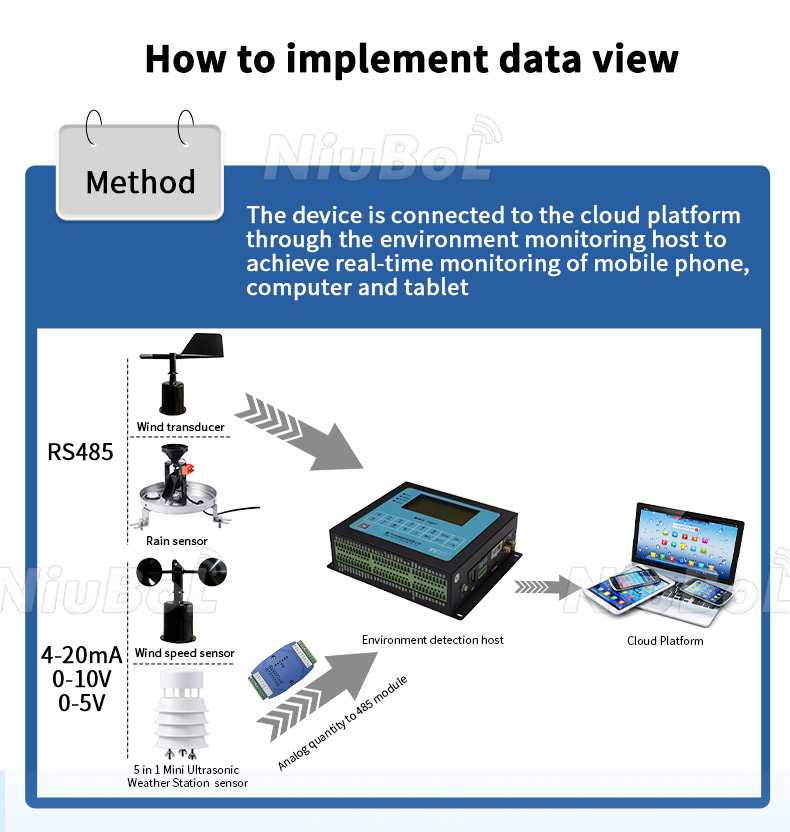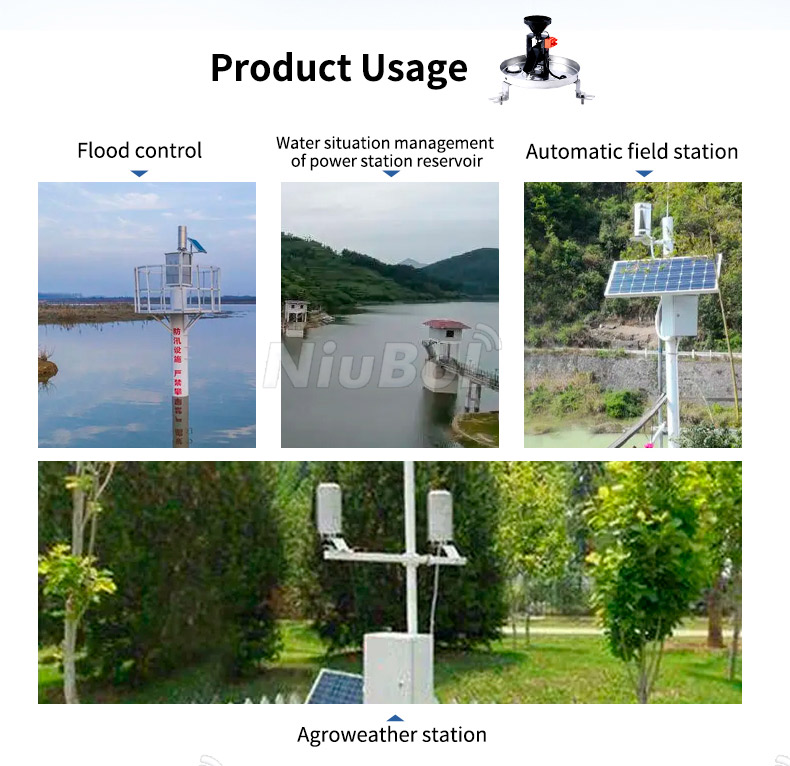

— Blogs —
—Products—
 Consumer hotline +8618073152920
Consumer hotline +8618073152920 WhatsApp:+8615367865107
Address:Room 102, District D, Houhu Industrial Park, Yuelu District, Changsha City, Hunan Province, China
Product knowledge
Time:2024-02-26 21:50:32 Popularity:1708
A rain gauge is an instrument used to measure precipitation. It can determine the amount and intensity of precipitation by collecting it and converting it into readable data. Common rain gauges include tipping bucket rain gauges and weighing rain gauges.
Rain gauges are widely used in meteorological, hydrological, agricultural and environmental research. They are a key tool for measuring precipitation and can help us better understand and predict weather and natural disasters.
When choosing a rain gauge, consider the specific needs of the application, the environment in which it will be used, and the level of accuracy required. Here are some steps to help you choose the right rain gauge:
1. Determine your needs:
- Determine the purpose of the rain gauge. Are you monitoring for irrigated agriculture, urban planning, climate research, or other purposes?
- Consider the expected rainfall intensity and frequency of rainfall events. Heavy rainfall may require a more robust rain gauge.
2. Choose the type of rain gauge:
Types of rain gauges: There are various types of rain gauges such as tipping bucket rain gauges, weighing rain gauges and manual rain gauges. Choose the type that best suits your requirements based on accuracy, ease of use and budget.
- For most applications, tipping bucket rain gauges are accurate and reliable. They are suitable for most environments and can measure the duration of rainfall.
- Siphon rain gauges are suitable for recording cumulative rainfall over a long period of time (e.g. a few days or weeks), but may not be accurate enough for short-term or heavy rainfall events.
- Mechanical rain gauges or pulse rain gauges can measure the amount of rainfall, with the option of a tipping bucket rain gauge.
- Electronic rain gauges can provide automatic and remote data collection, which is useful for modern monitoring systems.
3. Consider design and materials:
- Ensure that the rain gauge is made of a durable material that can withstand the elements, such as stainless steel or plastic.
- Check the size of the collection bucket. Larger collection buckets collect more water and reduce the number of tips needed to measure storm water.
4. wind and weather resistance:
- Look for rain gauges designed to minimise wind interference. Some rain gauges have counterweight designs or windshields to stabilise the device.
- Also consider the rain gauge's resistance to snow, ice or hail, which can affect its performance.
5. Calibration and maintenance:
- Select a rain gauge that is easy to calibrate and maintain. Regular maintenance is necessary to obtain accurate readings.
- Some rain gauges come with a calibration certificate, which is important for regulatory compliance or scientific research.

6. Data output and connectivity:
- If automated data collection is required, choose a rain gauge with digital output capabilities (e.g., wired or wireless connectivity).
- Consider whether the rain gauge needs to be compatible with specific data logging or weather station systems.
7. Budget:
- Rain gauges vary in features and performance, as well as price. Determine your budget to find a great value option that best meets your needs.
8. manufacturer and warranty:
- Invest in a rain gauge made by a reputable manufacturer that offers customer support and warranty services.
9. Environment:
- Consider the specific environmental conditions in which the rain gauge will be installed, such as temperature, humidity, and the presence of animals or large debris that could interfere with the rain gauge.
10. Installation:
Consider where and how the rain gauge will be installed. Some rain gauges are designed for specific installations, such as mounting on a post, fence or roof.

By carefully considering these factors, you can select a rain gauge that will provide the necessary data for your application with the proper accuracy and reliability to accurately and efficiently measure precipitation.
Related recommendations
Sensors & Weather Stations Catalog
Agriculture Sensors and Weather Stations Catalog-NiuBoL.pdf
Weather Stations Catalog-NiuBoL.pdf
Related products
 Combined air temperature and relative humidity sensor
Combined air temperature and relative humidity sensor Soil Moisture Temperature sensor for irrigation
Soil Moisture Temperature sensor for irrigation Soil pH sensor RS485 soil Testing instrument soil ph meter for agriculture
Soil pH sensor RS485 soil Testing instrument soil ph meter for agriculture Wind Speed sensor Output Modbus/RS485/Analog/0-5V/4-20mA
Wind Speed sensor Output Modbus/RS485/Analog/0-5V/4-20mA Tipping bucket rain gauge for weather monitoring auto rainfall sensor RS485/Outdoor/stainless steel
Tipping bucket rain gauge for weather monitoring auto rainfall sensor RS485/Outdoor/stainless steel Pyranometer Solar Radiation Sensor 4-20mA/RS485
Pyranometer Solar Radiation Sensor 4-20mA/RS485
Screenshot, WhatsApp to identify the QR code
WhatsApp number:+8615367865107
(Click on WhatsApp to copy and add friends)
